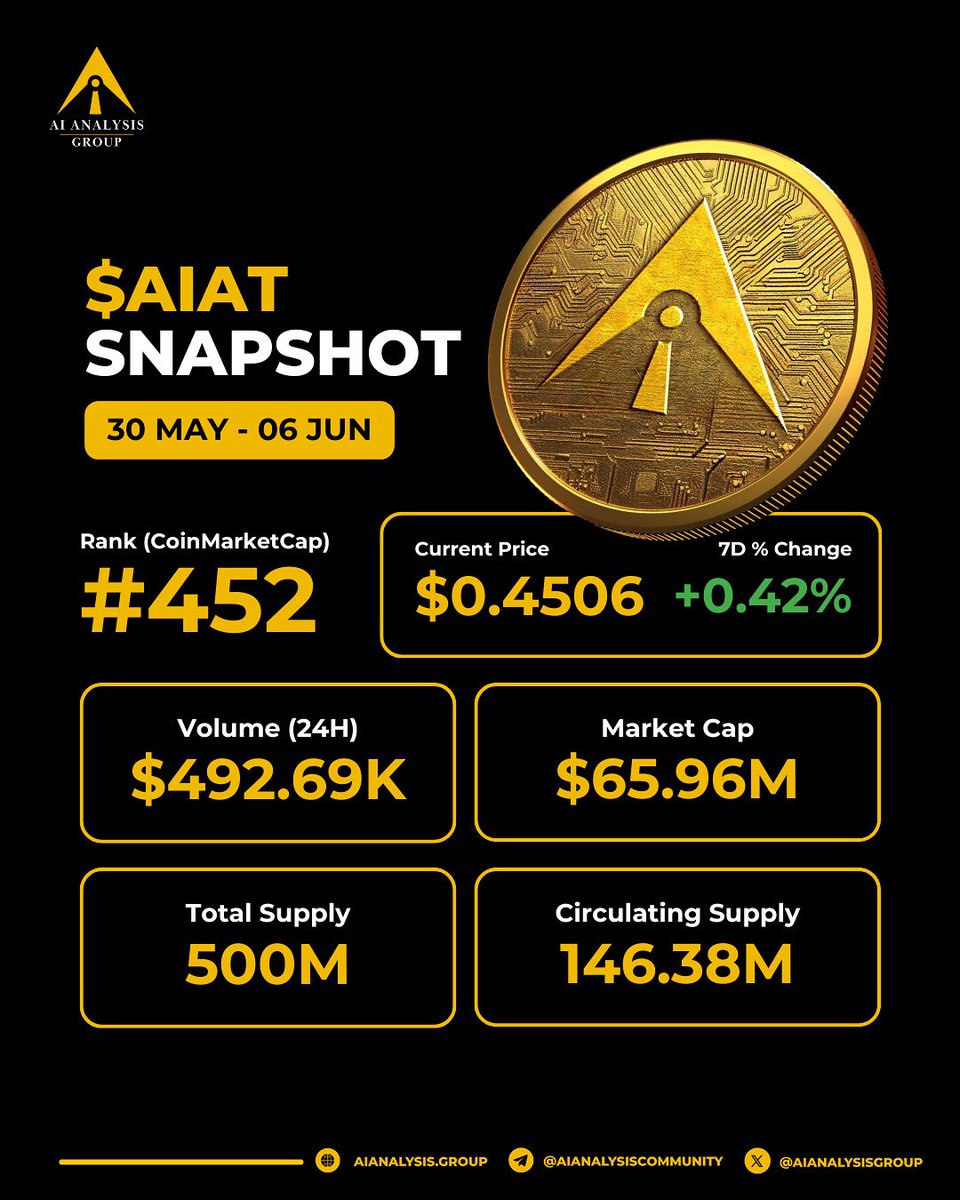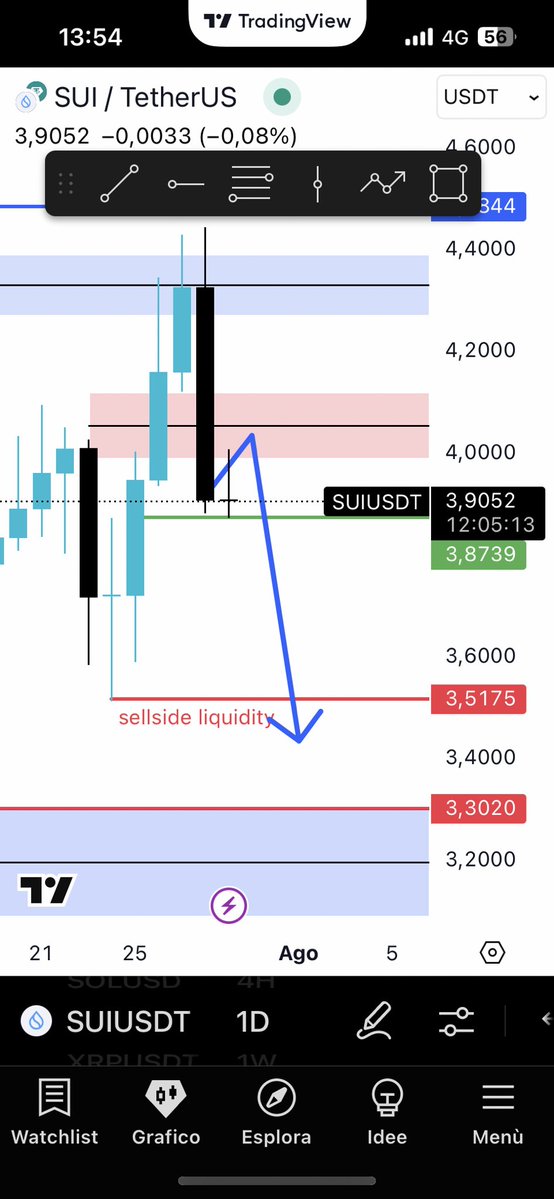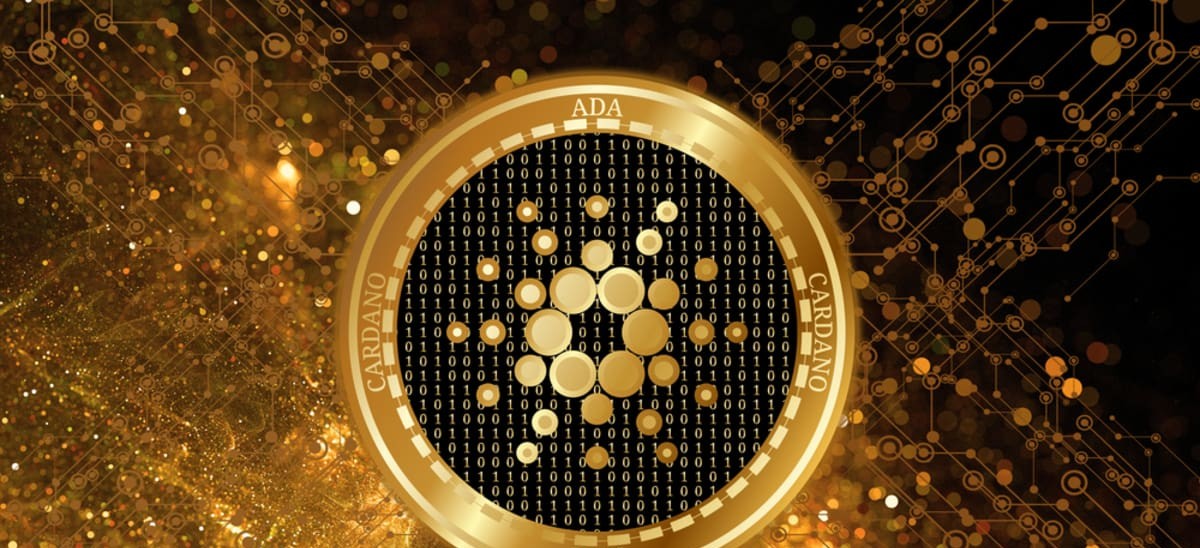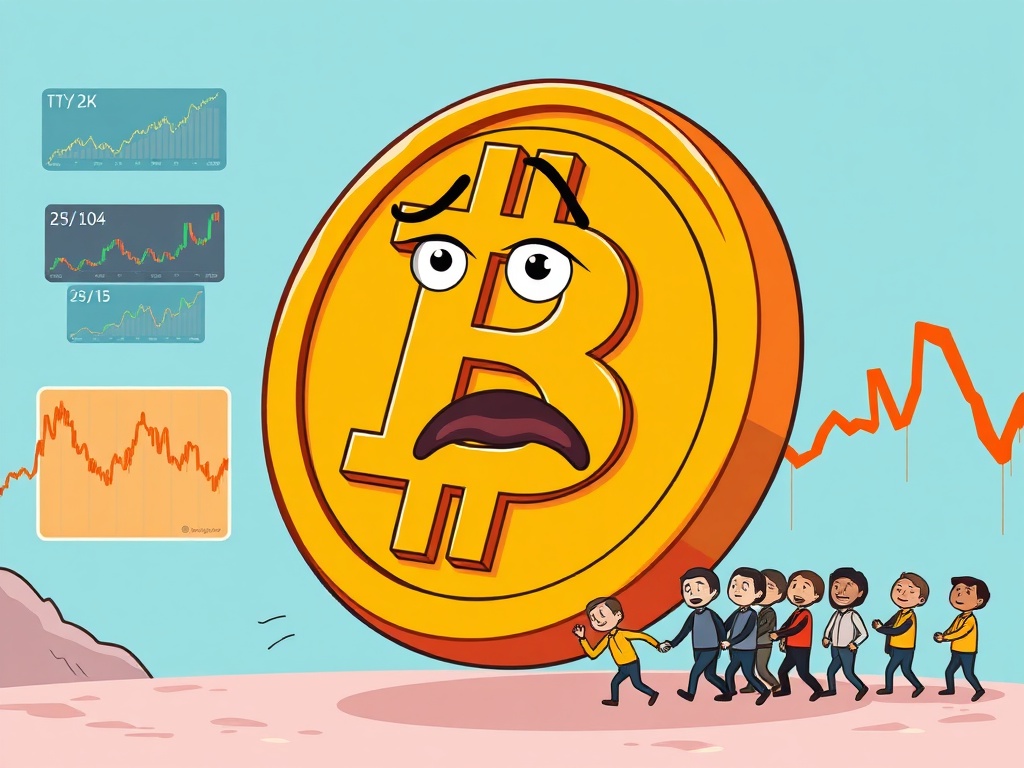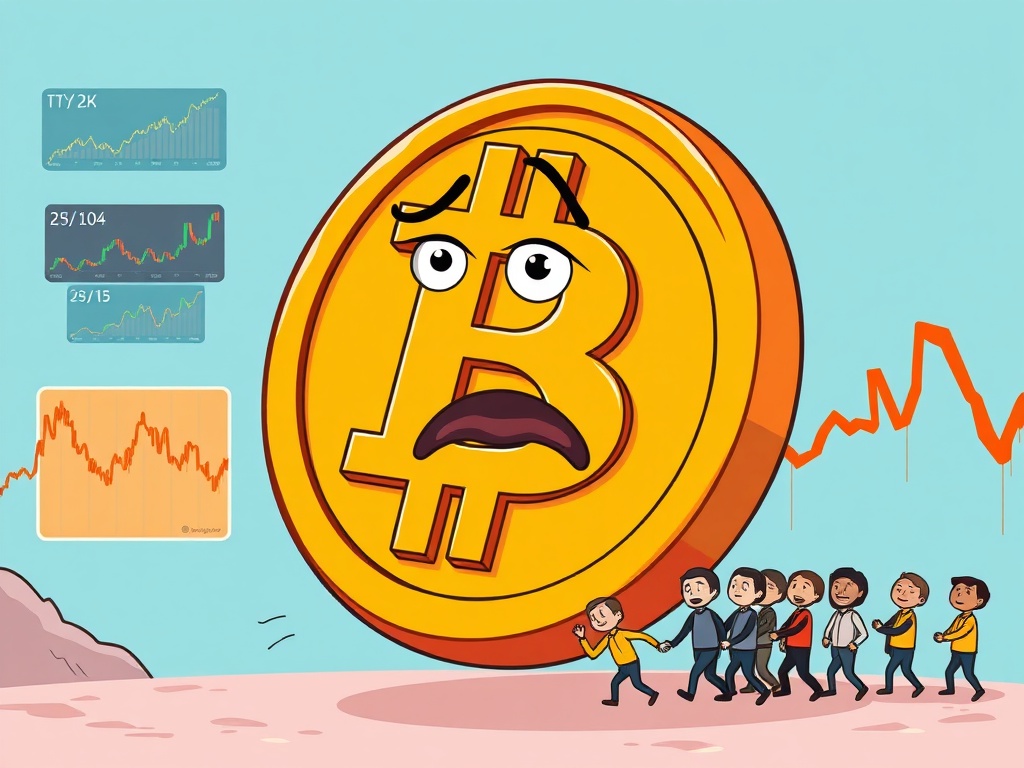—
Unpacking the Role of AI in Shaping the Future of Cryptocurrency
In the rapidly evolving ecosystem of cryptocurrency, artificial intelligence (AI) is steadily transforming how we perceive, interact with, and ultimately value digital assets. If you glance at the headlines from early June 2025, you’ll see a tapestry woven with AI’s persistent influence—from the emergence of AI-linked tokens like $AIAT to AI-driven analytics enhancing blockchain security. Exploring AI’s current and potential roles offers a fascinating glimpse into the future of finance and technology converging.
—
The $AIAT Token: A Symbol of AI’s Integration into Crypto
Among the varied landscape of tokens, $AIAT stands out as an emblem of AI integration within blockchain. Trading at $0.4506 with a modest weekly gain and a market cap nearing $66 million, $AIAT is not just another token; it embodies the trend of merging artificial intelligence with blockchain analytics and decentralized finance mechanisms.
Why is this convergence compelling? Because AI enables real-time data processing and pattern recognition far beyond human capability. Imagine a decentralized platform where decisions—be it trading, security monitoring, or regulatory compliance—are powered by self-learning algorithms that adapt as markets evolve. This paints $AIAT as a gateway token to this future, attracting investors intrigued by AI’s promise to enhance transparency, automate insights, and improve overall system efficiency.
The sub-$1 entry point gives retail investors a chance to participate in this frontier, democratizing access to next-generation financial technologies. But the token’s true growth potential hinges on its ability to roll out tangible utilities, forge strong partnerships, and differentiate itself in a crowded AI-crypto field.
—
AI-Enhanced Blockchain Analytics: A Crucible for Security and Trust
Blockchain, at its core, is about trustless, transparent record-keeping. However, the rise of privacy-focused tools such as mixers—designed to dispense obscurity—presents challenges for regulation and law enforcement. Here, AI’s capability to perform complex topological analyses, like those researched by Jon Ander Medina, becomes invaluable.
By applying AI to detect subtle patterns or anomalies in transaction flows, the crypto world can strike a balance: preserving user privacy while preventing illicit activities. The role of AI in this respect extends beyond enforcement; it builds trust in blockchain platforms by making them more resilient against fraud, money laundering, and cyberattacks.
Meanwhile, companies focused on AI-powered blockchain analytics and cybersecurity, such as Laika_ai, push the envelope further. Their tools provide instant threat detection, automated smart contract auditing, and predictive analytics, which are cornerstones for attracting institutional players who demand stringent security standards before committing capital.
—
AI’s Influence on Decentralized Finance and Smart Contract Innovation
Decentralized finance (DeFi) has revolutionized access to financial services, but it is not without risks: smart contract bugs, flash loan exploits, and unpredictable market swings. AI steps in as a game-changer by enabling smart contracts to ‘learn’ from past incidents, thereby improving their logic and responsiveness autonomously.
Picture AI-powered oracles sifting through vast external data streams to feed smart contracts with real-time, accurate information or decentralized autonomous organizations (DAOs) using AI to optimize governance decisions dynamically.
This fusion could usher in the next wave of DeFi maturity—characterized by smarter contracts that reduce risks and enhance user confidence. It could also temper the currently volatile nature of many altcoins by fostering measured, data-backed decision-making processes.
—
The Duality of AI: Innovation Amid Regulatory and Market Uncertainty
AI’s integration comes with challenges. Regulatory bodies worldwide are still grappling with how to oversee AI-enhanced crypto platforms without stifling innovation. Questions arise about accountability when algorithms make decisions, transparency in AI models, and ethical data use.
Moreover, the crypto market’s sensitivity to external forces—from political clashes involving figures like Elon Musk and Donald Trump to social media-driven sentiment swings—means AI cannot shield tokens or platforms entirely from human-driven volatility and unpredictability.
Nonetheless, the technological promise remains clear: AI augments the robustness, security, and transparency of crypto ecosystems. Its ongoing evolution and fitting regulatory frameworks will determine whether AI merely supports crypto or propels it into a mainstream financial vehicle.
—
Looking Ahead: AI as a Pillar of Crypto’s Next Chapter
The story of AI in cryptocurrency is far from over—it’s a dynamic narrative unfolding with each technological breakthrough, market shift, and regulatory development. Tokens like $AIAT illustrate the tangible steps toward embedding AI into blockchain’s foundation.
For investors, developers, and regulators alike, the focus should be on embracing AI’s strengths—automation, data analytics, threat detection—while vigilantly working to balance innovation with security and compliance. As AI algorithms become more sophisticated, we can anticipate a new era where cryptocurrency is not only a tool for decentralized exchange but also a smart, adaptive ecosystem capable of meeting the demands of the global economy.
AI’s role is that of both a catalyst and a guardian, helping to shape a cryptocurrency landscape that is efficient, trustworthy, and inclusive.
—
Sources
– Official CoinMarketCap data for $AIAT token
– Jon Ander Medina’s research on blockchain mixer topologies at IEEE Conference
– Laika_ai website and product documentation
– General market analysis of cryptocurrency influences, June 2025
—

